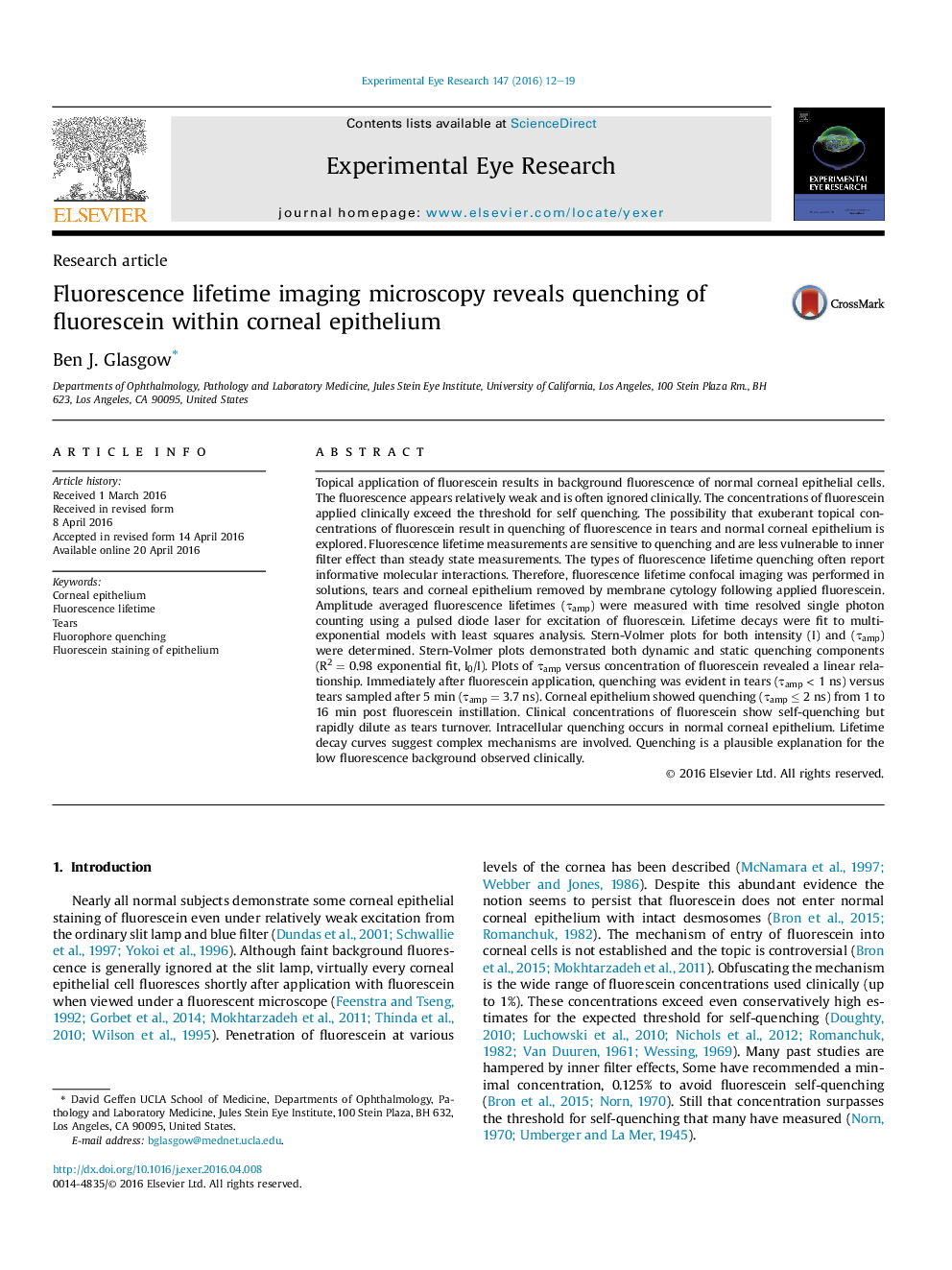| کد مقاله | کد نشریه | سال انتشار | مقاله انگلیسی | نسخه تمام متن |
|---|---|---|---|---|
| 6196236 | 1602575 | 2016 | 8 صفحه PDF | دانلود رایگان |
- Fluorescein for topical use exceeds self-quenching threshold concentrations.
- Concentration dependent reduction in fluorescence includes several mechanisms.
- Inner filter effects, static and dynamic quenching are operative.
- Fluorescein stains normal corneal epithelium; FLIM shows intracellular quenching.
- The mechanism of intracellular quenching appears complex.
Topical application of fluorescein results in background fluorescence of normal corneal epithelial cells. The fluorescence appears relatively weak and is often ignored clinically. The concentrations of fluorescein applied clinically exceed the threshold for self quenching. The possibility that exuberant topical concentrations of fluorescein result in quenching of fluorescence in tears and normal corneal epithelium is explored. Fluorescence lifetime measurements are sensitive to quenching and are less vulnerable to inner filter effect than steady state measurements. The types of fluorescence lifetime quenching often report informative molecular interactions. Therefore, fluorescence lifetime confocal imaging was performed in solutions, tears and corneal epithelium removed by membrane cytology following applied fluorescein. Amplitude averaged fluorescence lifetimes (Ïamp) were measured with time resolved single photon counting using a pulsed diode laser for excitation of fluorescein. Lifetime decays were fit to multi-exponential models with least squares analysis. Stern-Volmer plots for both intensity (I) and (Ïamp) were determined. Stern-Volmer plots demonstrated both dynamic and static quenching components (R2 = 0.98 exponential fit, I0/I). Plots of Ïamp versus concentration of fluorescein revealed a linear relationship. Immediately after fluorescein application, quenching was evident in tears (Ïamp < 1 ns) versus tears sampled after 5 min (Ïamp = 3.7 ns). Corneal epithelium showed quenching (Ïamp â¤Â 2 ns) from 1 to 16 min post fluorescein instillation. Clinical concentrations of fluorescein show self-quenching but rapidly dilute as tears turnover. Intracellular quenching occurs in normal corneal epithelium. Lifetime decay curves suggest complex mechanisms are involved. Quenching is a plausible explanation for the low fluorescence background observed clinically.
369
Journal: Experimental Eye Research - Volume 147, June 2016, Pages 12-19
